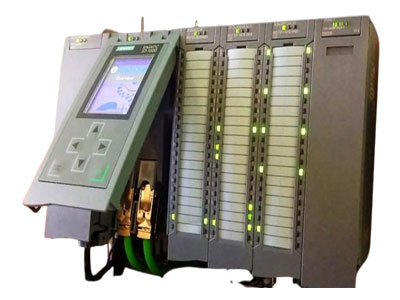Why PLC Is Used In Automation?
Key Takeaway
PLCs are used in automation because they increase reliability, stability, and performance in industrial processes. They can handle complex tasks with precision, reducing the need for human intervention and minimizing human error. PLCs offer flexibility and scalability, allowing for easy adjustments and expansions in automated systems. They are cost-effective and can integrate with various devices and systems, making them essential in modern industrial automation. Overall, PLCs enhance efficiency, safety, and productivity in automated environments.
Benefits of Using PLCs in Automation
PLCs offer a plethora of advantages that make them invaluable assets in the realm of automation. Firstly, they provide a centralized control system that enhances efficiency and simplifies operations. With PLCs, complex automation tasks can be executed seamlessly, ensuring smooth and precise control over machinery and processes.

Reliability and Precision in Industrial Processes
Reliability and precision are the backbone of industrial processes, and PLCs stand out for their exceptional performance in these areas. Unlike manual control systems or older relay-based setups, PLCs offer a level of consistency and accuracy that is unmatched. This reliability is especially critical in industries like manufacturing and assembly lines, where even minor errors can lead to significant disruptions and losses.
PLCs ensure consistent operation by executing programmed instructions with precision, adhering strictly to predefined parameters and logic. This level of automation minimizes human error and variability, resulting in smoother operations and improved productivity. Moreover, PLCs can perform complex tasks with reliability, such as coordinating multiple machines and processes simultaneously, optimizing efficiency across the production line.
In essence, PLCs serve as reliable guardians of industrial processes, providing a robust framework for controlling machinery and ensuring that operations run smoothly. Their ability to deliver precise control over critical variables makes them indispensable assets in modern manufacturing environments, where precision and consistency are non-negotiable requirements for success.
You May Like to Read
Flexibility and Scalability
Flexibility and scalability are two key attributes that make PLCs indispensable in the realm of automation. Their adaptable nature allows them to cater to a diverse array of applications and operating conditions, ranging from basic control tasks to intricate processes. Whether it’s overseeing simple on/off functions or orchestrating elaborate sequences of operations, PLCs offer the versatility needed to accommodate a broad spectrum of industrial requirements.
Furthermore, the scalability of PLC systems is a boon for businesses seeking growth and expansion. As production demands increase or new processes are introduced, PLC setups can be effortlessly expanded or modified to meet evolving needs. This scalability ensures that investments in automation remain future-proof, enabling companies to stay agile and responsive in a dynamic market landscape without the burden of costly overhauls.
In essence, the combination of flexibility and scalability positions PLCs as ideal solutions for businesses looking to optimize their operations and adapt to changing circumstances. Their ability to seamlessly integrate with existing infrastructure while accommodating future growth makes them invaluable assets in the pursuit of efficiency and competitiveness in the industrial arena.
Cost-Effectiveness of PLC Systems
The cost-effectiveness of PLC systems is a pivotal aspect that underlines their widespread adoption in industrial automation. While the upfront investment in PLC hardware and software might appear substantial, it pales in comparison to the long-term savings and benefits they deliver.
One of the primary cost-saving advantages of PLCs lies in their streamlined design, which significantly reduces the need for extensive wiring and complex control panels associated with traditional control systems. This not only minimizes material costs but also slashes installation and maintenance expenses. Additionally, PLCs boast robust reliability and durability, resulting in reduced downtime due to repairs and maintenance, further optimizing operational costs.
Moreover, PLCs are adept at optimizing energy consumption through precise control and monitoring of industrial processes. By efficiently managing power usage, PLC systems help organizations trim down their utility bills and enhance overall operational efficiency, translating into substantial cost savings over time.
In essence, the cost-effectiveness of PLC systems stems from their ability to deliver enhanced operational efficiency, minimized downtime, and optimized resource utilization, making them a sound investment for businesses seeking sustainable growth and profitability in the competitive industrial landscape.
Examples of PLC Applications in Automation
The practical applications of PLCs span across a multitude of industries, showcasing their adaptability and effectiveness in automating diverse processes. Take, for example, the food processing industry, where PLCs are instrumental in regulating temperature, controlling mixing and blending processes, and ensuring precise packaging operations. In pharmaceutical manufacturing, PLCs oversee critical tasks such as batch processing, sterilization, and quality control, adhering to stringent regulatory standards.
In utilities, PLCs are deployed for monitoring and managing water treatment plants, power distribution systems, and wastewater treatment facilities, optimizing resource utilization and enhancing operational efficiency. Furthermore, in building automation, PLCs control lighting, HVAC systems, and security devices, contributing to energy conservation and occupant comfort.
In each of these industries, PLCs demonstrate their versatility and reliability, providing tailored solutions to meet the specific needs and challenges of modern industrial processes. As businesses continue to seek ways to improve productivity, reduce costs, and enhance competitiveness, the role of PLCs in automation remains indispensable, driving innovation and progress across various sectors of the economy.
Conclusion
In conclusion, PLCs are indispensable tools that have revolutionized the landscape of industrial automation. Their ability to provide reliable, precise, and cost-effective control over a wide range of processes makes them essential components in modern manufacturing and production facilities. As industries continue to evolve and embrace automation, PLCs will undoubtedly remain at the forefront, driving innovation, efficiency, and productivity.
